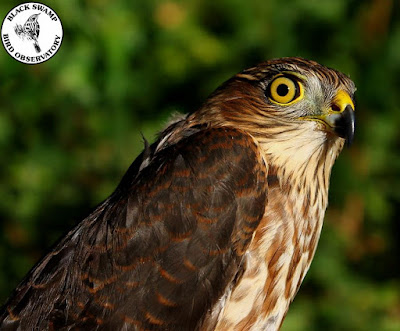Date: Wednesday, September 30, 2015
Pictured: Yellow-bellied Sapsucker
- Number of Recaptures: 25
- Number of Species Banded: 24 (+3 recap only)
- Top Five Species Banded: Blackpoll Warbler 53 (+7 recap), Swainson’s Thrush 17 (+5 recap), Tennessee Warbler 11, Gray-cheeked Thrush 7 (+5 recap), and Myrtle Warbler 5.
- Total Number of Species on Point Count: 17
- Total Number of Species Recorded: 45
- Total Number of Warbler Species Recorded: 11 (25 plus Brewster’s for fall)
- Total Number of Hours Station Operated: 6.5
Highlights: Yellow-bellied Sapsucker, Golden-crowned Kinglet, Ruby-crowned Kinglet, Cape May Warbler, Least Flycatcher, and Lincoln’s Sparrow.
Notes: Weather change over night has made a lot of bird community changes. Kinglets increased along with Hermit Thrush and Yellow-bellied Sapsucker.
Weather: Winds Northeast. Temperature in the 60s.

































